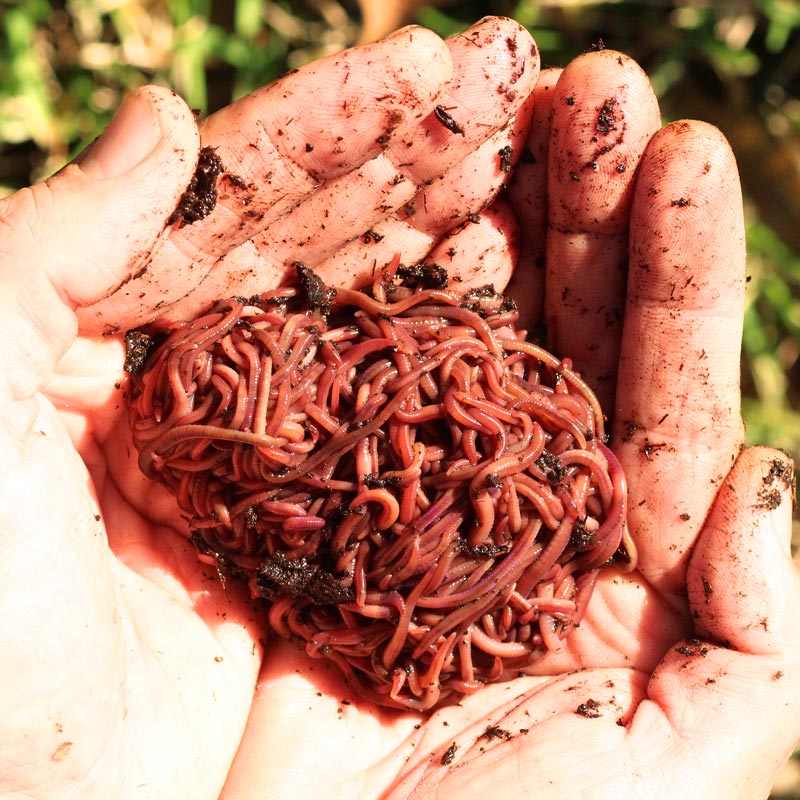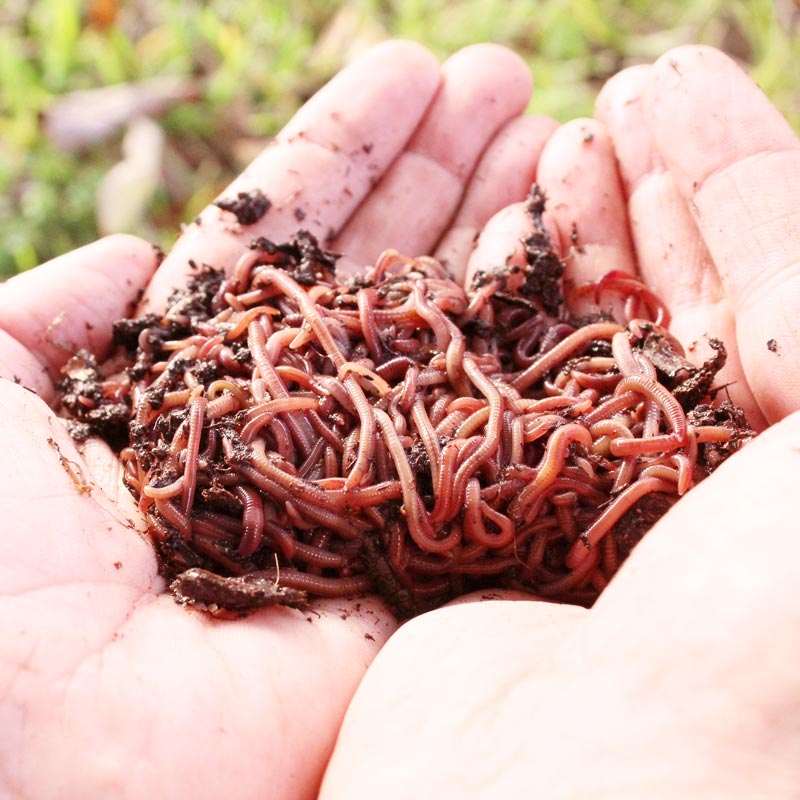Red Wiggler Worms - Boost Your Dirt Wellness Normally
Red Wiggler Worms - Boost Your Dirt Wellness Normally
Blog Article
Making The Most Of the Conveniences of Red Wiggler Worms: A Comprehensive Handbook for Home Gardeners and Urban Farmers
In the world of lasting horticulture techniques, red wiggler worms stand as unhonored heroes, silently transforming natural waste right into nutrient-rich castings that can work wonders for soil health. By exploring the complexities of how to efficiently care for and take full advantage of the benefits of red wiggler worms, individuals can open a wealth of opportunities for boosting the sustainability and performance of their gardening undertakings.
Understanding Red Wiggler Worms
Red Wiggler worms, renowned for their effective composting capabilities, are a varieties of earthworms extensively made use of in vermiculture practices. These worms, scientifically called Eisenia fetida, thrive in decomposing organic product, making them suitable prospects for composting (Red Wiggler Worms). Red Wigglers are voracious eaters, qualified of eating their very own weight in natural waste daily. Their digestion process breaks down organic issue right into nutrient-rich castings, which are a valuable resource for improving soil and promoting plant development.
One trick feature of Red Wiggler worms is their reproductive rate. These hermaphroditic creatures have both male and women reproductive organs, permitting them to duplicate quickly under beneficial problems. A fully grown Red Wiggler can create multiple spawn in a short duration, making certain a constant populace within a composting system.

Establishing a Worm Container
When establishing a worm bin for vermiculture functions, correct prep work and focus to detail are important for creating a favorable atmosphere for Red Wiggler worms,. Begin by choosing a suitable container for your worm container. This can be a plastic or wooden container with a cover to preserve wetness levels and shield the worms from light. Ensure that the container has water drainage holes near the bottom to avoid waterlogging.

Area the worm bin in an awesome, dark area away from straight sunshine and extreme temperature levels. Regularly check the wetness degrees, including water if the bed linens feels completely dry or flaky. Feed the worms a well balanced diet plan of fruit and vegetable scraps, preventing citrus fruits, onions, and spicy foods. By complying with these steps, you can establish a flourishing worm container that will efficiently refine organic waste right into nutrient-rich vermicompost for your garden.
Feeding and Maintaining Worms
Making sure a nourishing and well balanced diet is critical for the health and efficiency of Red Wiggler worms in a vermiculture system. Red Wigglers are ravenous eaters, efficient in consuming their very own body weight in natural matter daily. To keep a flourishing worm populace, it is vital to supply them with a variety of food scraps such as fruit and vegetable peels, coffee premises, tea bags, and smashed eggshells. It is crucial to stay clear of feeding them citrus fruits, onions, garlic, milk items, meat, and oily foods as these can be damaging to the worms or trigger undesirable smells in the container.
Proper dampness degrees are also vital for the well-being of Red Wiggler worms. By faithfully checking their diet, dampness, and environmental conditions, home garden enthusiasts and urban farmers can maintain a healthy and balanced and efficient Red Wiggler worm populace for composting functions.
Harvesting Worm Spreadings
To effectively extract nutrient-rich worm spreadings from the vermicompost, a systematic harvesting process is important for taking full advantage of the composting benefits. Red Wiggler Worms. The very first step in gathering worm castings is to motivate the worms to migrate away of the bin. This can be achieved by putting fresh food scraps on one side and leaving the opposite side undisturbed for a couple of days. When the bulk of worms have relocated to the side with fresh food, the spreadings can be gathered from the opposite side.
After the spreadings have actually been harvested, it is crucial to divide any continuing to be worms from the castings to prevent damaging them throughout storage space or application. One effective technique is to develop cone-shaped piles of castings under intense light. Worms will instinctively move far from the light, enabling easy separation and removal.
Finally, the collected worm spreadings ought to be saved in an awesome, dark, and dry location to preserve their top quality and performance as a nutrient-rich dirt amendment. By following these steps, home gardeners and city farmers can take find more full advantage of the advantages of red wiggler worms in their vermicomposting systems.
Making Use Of Worm Castings in Horticulture
The unification of nutrient-rich worm spreadings right into garden soil can significantly boost plant development and total dirt wellness. Worm spreadings, additionally referred to as vermicast, are an all-natural plant food generated by red wiggler worms as they damage down organic matter. These castings are rich in essential nutrients like nitrogen, phosphorus, potassium, and useful microorganisms that advertise plant growth and enhance soil structure.
When making use of worm spreadings in horticulture, it is important to blend them extensively right into the dirt or utilize them as a leading dressing around plants. The slow-release nature of worm castings guarantees a consistent supply of nutrients to plants gradually, lowering the danger of nutrient leaching and promoting long-term dirt fertility. In addition, worm spreadings assist enhance soil aeration, water retention, and microbial task, developing a healthy and balanced atmosphere for plant roots to thrive.

Verdict
In verdict, the usage of red wiggler worms in home horticulture and city farming can significantly profit dirt health and plant growth. By comprehending just how to set up and preserve a worm container, feed the worms properly, and gather their nutrient-rich spreadings, garden enthusiasts can optimize the advantages of these visit here earthworms. Incorporating worm castings into horticulture techniques can enhance soil fertility and total plant productivity. Generally, red wiggler worms use a efficient and lasting solution for enhancing yard and ranch returns.
In the realm of sustainable gardening methods, red wiggler worms stand as unrecognized heroes, quietly changing natural waste right into nutrient-rich spreadings that can function marvels for dirt health and wellness.When developing a worm container for vermiculture objectives, proper prep work and focus to information are essential for creating a conducive setting for Red Wiggler worms. The initial action in look at here now harvesting worm castings is to urge the worms to move to one side of the bin. Worm castings, additionally understood as vermicast, are a natural plant food generated by red wiggler worms as they break down organic issue. By recognizing exactly how to set up and keep a worm container, feed the worms appropriately, and gather their nutrient-rich castings, gardeners can make best use of the benefits of these earthworms.
Report this page